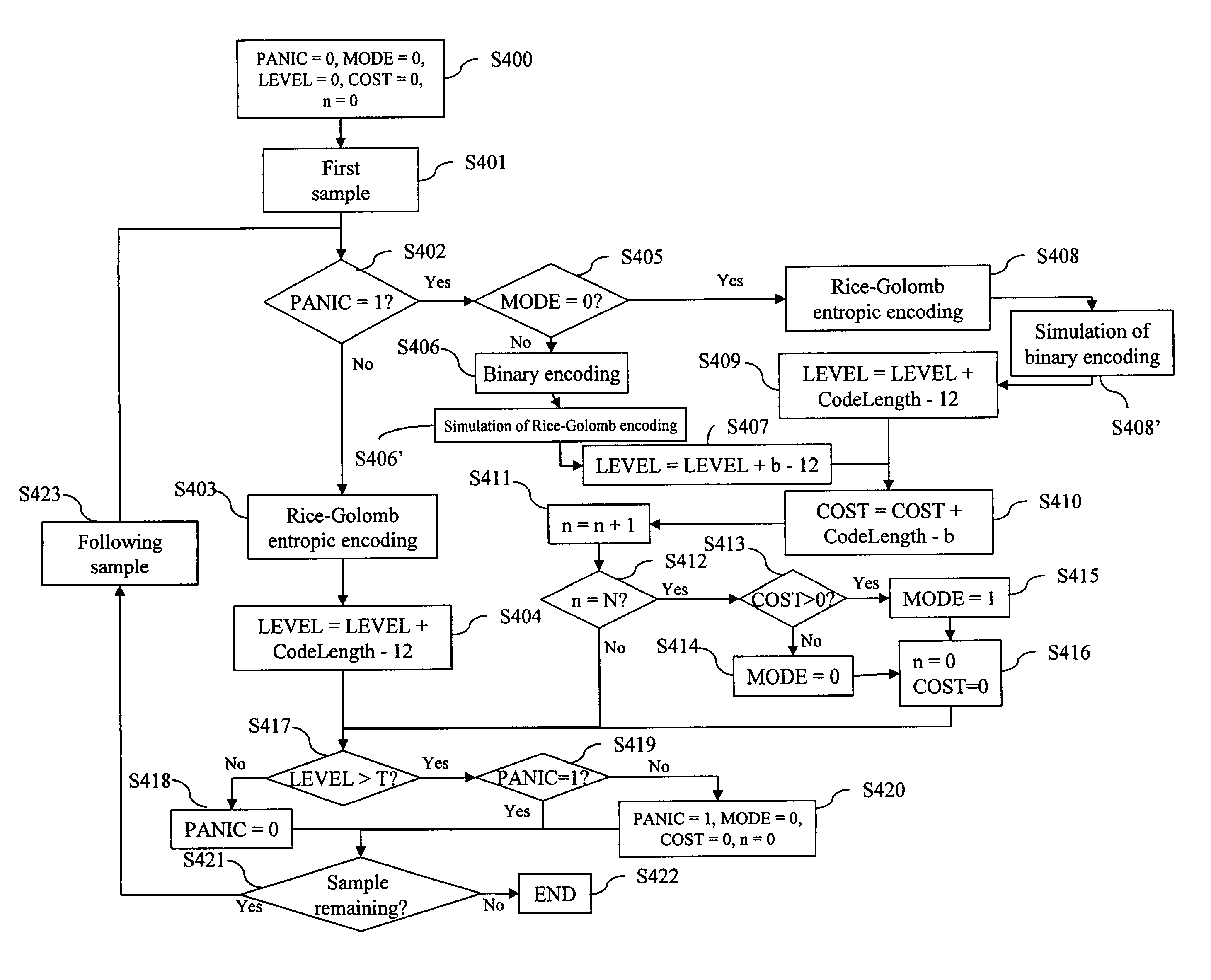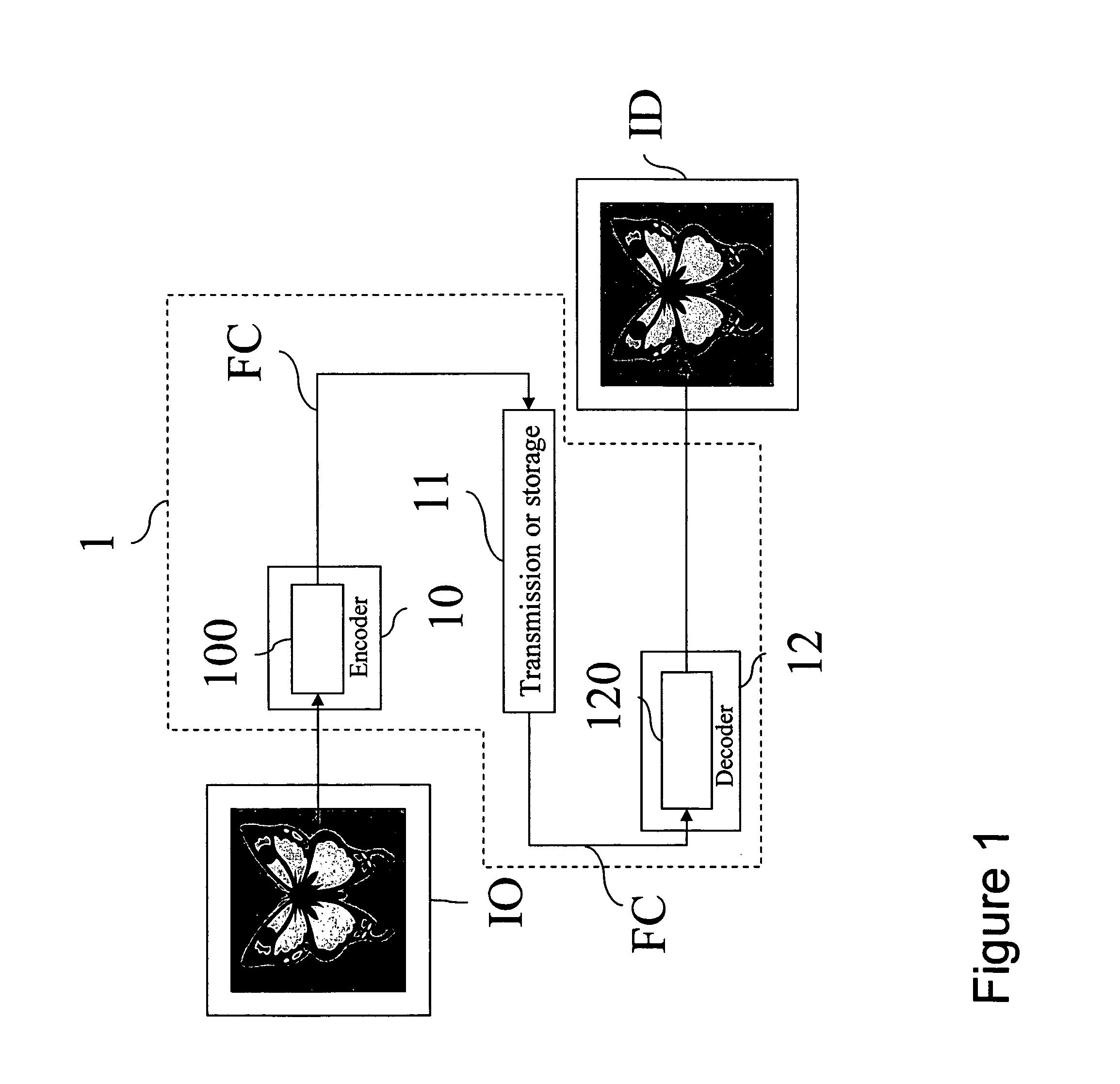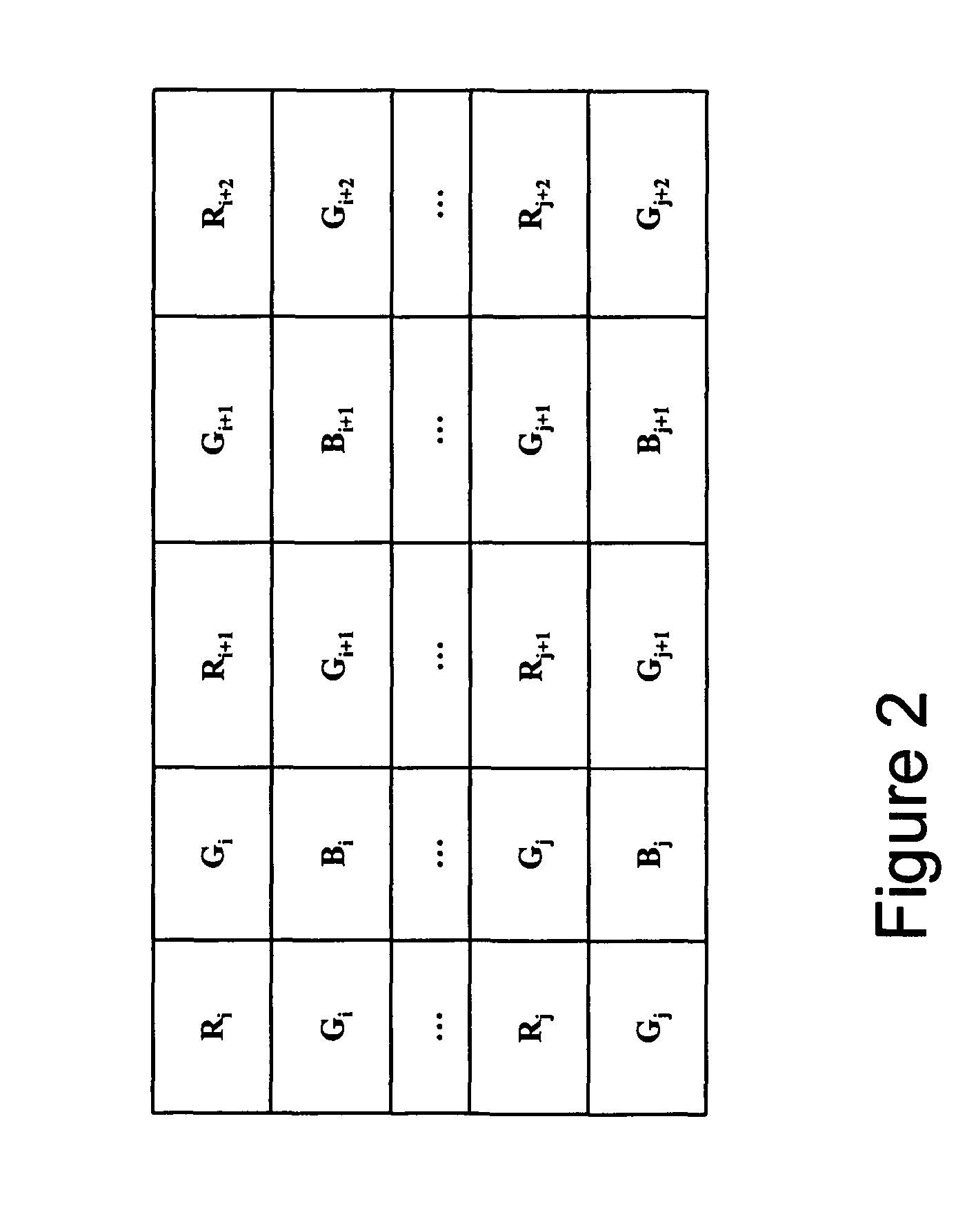Methods and devices for encoding a digital image signal and associated decoding methods and devices
a digital image and signal technology, applied in the field of methods and devices for encoding digital images, can solve the problems of reducing the cost of buffers, reducing and requiring a relatively high memory capacity for encoding and decoding digital images, so as to reduce the size of buffer memory needed, avoid overflow of buffer memory, and reduce implementation costs
- Summary
- Abstract
- Description
- Claims
- Application Information
AI Technical Summary
Benefits of technology
Problems solved by technology
Method used
Image
Examples
Embodiment Construction
[0149]The encoding / decoding methods and devices according to the invention are now described in the context of their application to the processing of multimedia entities in the form of digital images.
[0150]With reference to FIG. 1 and designated by the general reference 1, a system for processing digital images incorporating encoding / decoding processing without loss according to the invention uses an encoder 10, a unit 11 and a decoder 12.
[0151]It should be noted here that the encoding / decoding methods according to the invention provide a particularly advantageous application in a telecommunications system comprising a plurality of terminal devices connected through a telecommunications network. The encoding / decoding methods according to the invention are then used in the terminal devices of the system so as to enable transmission of files through the telecommunications network and thus reduce the traffic and transmission times.
[0152]According to another particularly advantageous ap...
PUM
 Login to View More
Login to View More Abstract
Description
Claims
Application Information
 Login to View More
Login to View More - R&D
- Intellectual Property
- Life Sciences
- Materials
- Tech Scout
- Unparalleled Data Quality
- Higher Quality Content
- 60% Fewer Hallucinations
Browse by: Latest US Patents, China's latest patents, Technical Efficacy Thesaurus, Application Domain, Technology Topic, Popular Technical Reports.
© 2025 PatSnap. All rights reserved.Legal|Privacy policy|Modern Slavery Act Transparency Statement|Sitemap|About US| Contact US: help@patsnap.com



